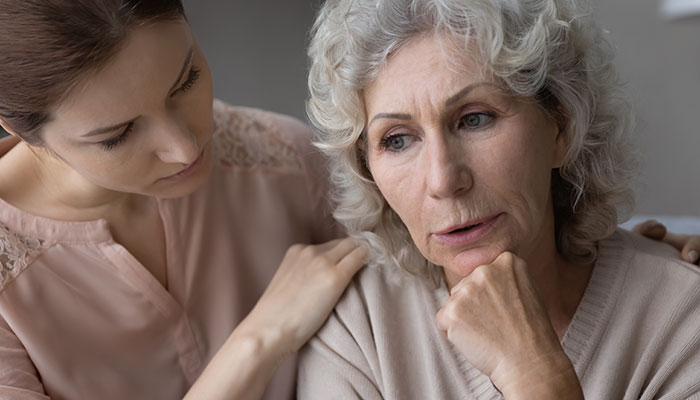
Many aspects of aging involve sadness and loss: Loss of independence, a serious diagnosis, death of a partner, spouse, or friend. You as a family member may experience sadness as you witness your loved one’s struggles. But also, for your own caregiving-related losses, such as of leisure time with friends and family or opportunities at work.
Sadness is an important emotion and one that we all feel. It’s our natural response to loss or defeat. According to noted researcher Brené Brown, the fact that we all feel it is in some ways its strength. When we feel sad, we are moved. (It’s why we like sad movies.) We can relate to the sadness of others. It helps us feel connected—to feel our common humanity.
When we are sad, we feel better when someone reaches out to us. The acknowledgment is helpful. They too have felt sadness in their lives.
Sadness helps us become more compassionate, more empathetic. It can also prompt us to reevaluate our life and priorities and perhaps ask for help from others.
Sadness is different from depression. Sadness may be a part of depression, but in its intense form—for instance, tearful crying—sadness comes and goes. Depression lasts for an extended time (two weeks or more). Rather than tears, depression commonly shows up as a loss of interest in previously enjoyable activities. Also, problems concentrating and staying engaged. Depression includes physical symptoms such as lack of energy, sleep problems (insomnia or sleeping too much), or eating irregularities (a lack of appetite or overeating). Sadness is not something one treats. Depression is generally treatable.
Older adults have a high incidence of depression. So do family caregivers. If you recognize signs of depression in yourself or in the person you care for, reach out. Talk to a doctor or therapist.

